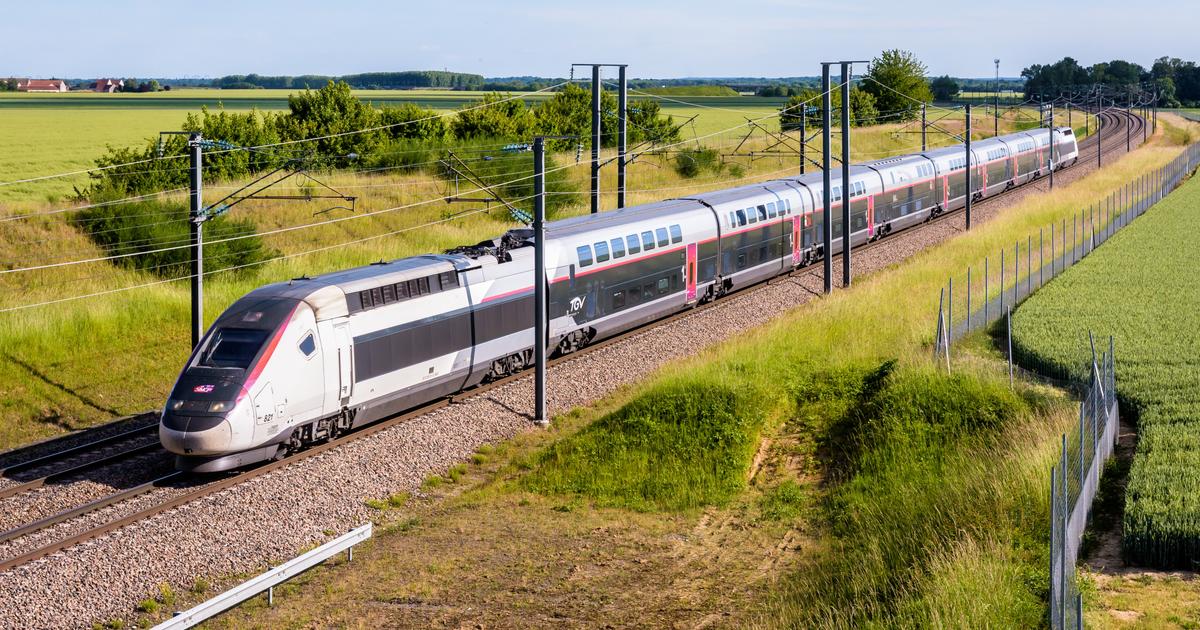The formula hit the mark.
Invited this Tuesday on the RTL morning show, SNCF CEO Jean-Pierre Farandou tried to reason with the controllers, while a large part of them are preparing to walk out from February 16 to 18, the weekend of School vacation.
“I ask them to think.
[...] A controller who agrees to work means 500 more French people go on vacation
.
Although this equation may seem, at first glance, surprising, it is actually quite easy to understand: a
“duplex”
(two-story) TGV has a capacity of around 500 seats.
For a TGV to operate, it is mandatory that at least one controller be present on board.
The same goes for Ouigo, Intercités, and most TERs.
Consequently, a non-striking controller can
single-handedly
“save” the running of a train.
Given the expected attendance, the train in question will probably be full: therefore 500 travelers will be able to arrive safely thanks to the presence of a loyal agent on duty.
The traditional question remains: why can't a train run without a controller?
The question had already arisen insistently during the massive strike of December 2022. The explanations then provided by the SNCF remain valid: to operate a train must have three professionals on board, a driver, a switchman and a controller.
It is only in the Transiliens and in certain small TERs that the latter are not necessary.
Contrary to popular belief, the missions of controllers go beyond simply checking tickets.
The ritual of
“checking transport tickets”
is even becoming more and more secondary while “anti-fraud” gates are becoming more widespread upstream of the platforms.
Read alsoThe SNCF has increased the ceiling price of tickets with an Avantage card on certain TGV lines
A controller ensures safety on board
The mandatory presence of a controller on board trains primarily meets rail safety requirements.
In a job offer published by the SNCF, the railway company explains that the latter
“ensures the safety and security of travelers”
.
The controller notably manages
“the closing of the train doors”,
which requires the greatest attention since accidents linked to getting on or off a moving train are not rare.
Still according to the SNCF sheet, the controller is also
“responsible for the proper functioning of the equipment”.
The controllers are particularly careful to ensure that passages between cars are not obstructed, so as to ensure optimal evacuation in the event of an accident.
If the difficulties come from travelers (refusal to present the transport ticket, altercations, attacks, terrorist threats, etc.), the controller liaises with the police and railway security officers.
He is also likely to contact the operational center in the event of passenger discomfort or technical problem.
Also read “It’s motivation that counts”: behind the scenes of the recruitment campaign for new Transilien SNCF agents
Two “train managers” in the TGVs
More anecdotally, the controller is always responsible for making
“welcome and orientation announcements”
to passengers and answering travelers’ questions.
His function is also
“commercial”
since he is responsible for promoting the services offered on board (catering for example), and he can sell transport tickets during the journey.
As travelers have undoubtedly learned to their cost, controllers have full prerogative in matters of
“regularization”
: they are the ones who decide whether or not to fine a passenger who is skipping ahead.
The diversity of these missions explains why the SNCF now favors the name
“chef de chef”
over the more simplistic term “controller”.
And despite the proliferation of gantries in stations, they should not desert trains in the future: the SNCF has committed to ensuring that all TGVs are equipped with two controllers within the next few years.
This is today the case for 70 to 90% of TGVs.
“The SNCF promised us that this would be the case from 2023, and we will finally have to wait until 2025. A controller is not enough when we have 500 people on a train
,” lamented Fabien Villedieu, Sud-Rail representative, on Tuesday. and spokesperson for the controllers on strike.
Interviewed on RTL, SNCF CEO Jean-Pierre Farandou preferred to recall that 200 additional controllers will be recruited this year by SNCF.
The company also promised more than 800 euros in bonuses, in the form of performance bonuses.
In the light of these concessions, will the
“leaders”
decide to save
the French holidays
at the last minute ?

